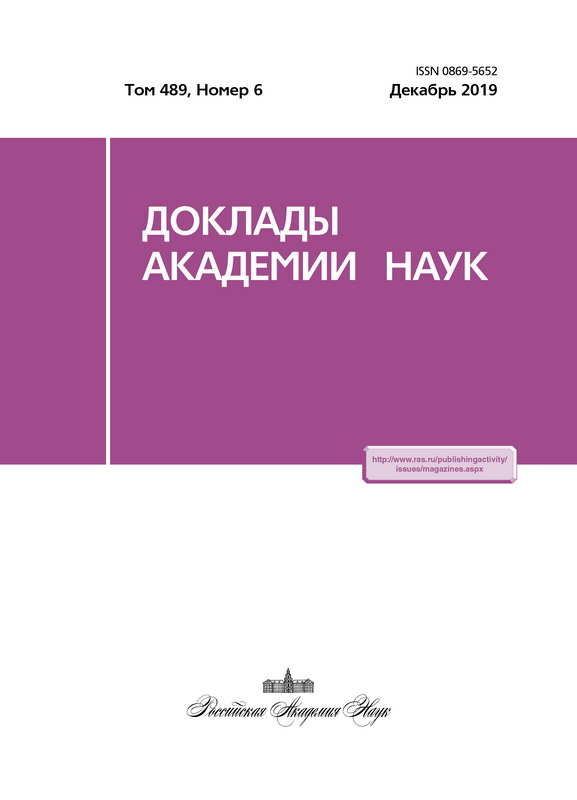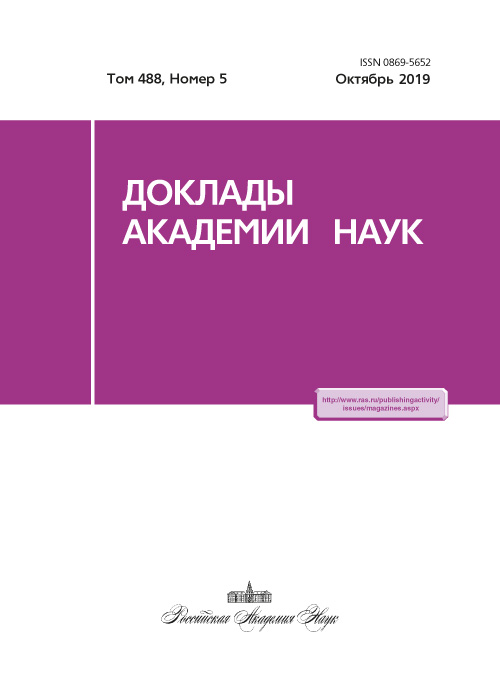Подвижность радиогенных изотопов 4Не и 3Не и их сохранность в минерале (на примере амфибола)
- Авторы: Гудков А.В.1, Колобов В.В.2, Тараканов С.В.3, Толстихин И.Н.1
-
Учреждения:
- Геологический институт Кольского Научного Центра Российской академии наук
- Центр физико-технических проблем энергетики Севера Кольского научного центра Российской академии наук
- Лаборатория свойств стекла
- Выпуск: Том 488, № 5 (2019)
- Страницы: 517-520
- Раздел: Геохимия
- URL: https://journals.eco-vector.com/0869-5652/article/view/17791
- DOI: https://doi.org/10.31857/S0869-56524885517-520
- ID: 17791
Цитировать
Аннотация
При исследованиях подвижности радиогенных 40Аr и 4He в минералах (для задач изотопной геохронометрии) предполагалось, что миграционные параметры, полученные для сохранившихся в минерале атомов, позволяют описать подвижность всех возникших в нём атомов, в том числе и тех, что были потеряны в прошлом. Для проверки этого предположения был выполнен анализ изотопной U-Th-Li-4He-3He-системы в амфиболах, выделенных из щелочных гранитов Понойского массива, Кольский полуостров. Была определена сохранность изотопов Не, отношение количества радиогенного Не, сохранившегося в минерале, к его количеству, которое должно было бы накопиться со времени формирования (метаморфизма) минерала. Оказалось, что 36% 3Не и только 14% 4Не сохранились в минерале. Результаты экспериментов по изучению миграции 3He и 4He из зёрен амфибола в ходе их ступенчатого нагрева в вакууме удалось аппроксимировать диффузионной моделью. Однако полученные в ходе моделирования параметры не позволили воспроизвести приведенную выше сохранность этих изотопов. Механизмы миграции атомов 3Не и 4Не в прошлом, приведшие к столь разным значениям их сохранности, отличаются от диффузионного механизма, адекватно описывающего миграцию атомов сохранившихся в минерале.
Ключевые слова
Об авторах
А. В. Гудков
Геологический институт Кольского Научного Центра Российской академии наук
Email: igor.tolstikhin@gmail.com
Россия, 184209, Мурманская область, г. Апатиты, ул. Ферсмана, 14
В. В. Колобов
Центр физико-технических проблем энергетики Севера Кольского научного центра Российской академии наук
Email: igor.tolstikhin@gmail.com
Россия, 184209, Мурманская область, г. Апатиты, ул. Ферсмана, 21a
С. В. Тараканов
Лаборатория свойств стекла
Email: igor.tolstikhin@gmail.com
Россия, 199004, г. Санкт-Петербург, проспект Средний В. О., д. 4
И. Н. Толстихин
Геологический институт Кольского Научного Центра Российской академии наук
Автор, ответственный за переписку.
Email: igor.tolstikhin@gmail.com
Россия, 184209, Мурманская область, г. Апатиты, ул. Ферсмана, 14
Список литературы
- Baxter E. F. Diffusion of Noble Gases in Minerals // Rev. Miner. Geochem. 2010. V. 72. P. 509-557.
- Tolstikhin I.N., Verchovsky A.B., Kamensky I.L., Skiba V.I., Gannibal M.A., Vetrin V.R., and Tarakanov S.V. Аmphibole: a Major Carrier of Helium Isotopes in Crustal Rocks // Chem. Geol. 2016. V. 444. P. 187-198.
- Ветрин В.Р., Каменский И.Л., Баянова Т.Б., Тиммерман М., Беляцкий Б.В., Левский Л.К., Балашов Ю.А. Меланократовые включения и петрогенезис щелочных гранитов Понойского массива (Кольский полуостров) // Геохимия. 1999. Т. 11. С. 1178-1190.
- Гудков А.В., Каменский И.Л., Мелихова Г.С., Скиба В.И., Токарев И.В., Толстихин И.Н. Тритий-гелий-3 метод и его применение для датирования подземных вод (на примере Кировского горнопромышленного района, Мурманская область) // Геохимия. 2014. Т. 7. С. 646-654.
- Meesters A. G. C. A., Dunai T. J. Solving the Production-Diffusion Equation for Finite Diffusion Domains of Various Shapes. Part I. Implications for low-temperature (U-Th)/He Thermochronology // Chem. Geol. 2002. V. 186. P. 333-344.
- Soderlund P., Juez-Larre J., Page L. M., and Dunai T. J. Extending the Time Range of Apatite (U-Th)/He Thermochronometry in Slowly Cooled Terranes: Palaeozoic to Cenozoic Exhumation History of Southeast Sweden // Earth Planet. Sci. Lett. 2005. V. 239. P. 266-275.
- Tolstikhin I.N., Lehmann B.E., Loosli H.H., Ka-mensky I.L., Nivin V.A., Orlov S.P., Ploschansky L.M., Tokarev I.V., and Gannibal M.A. Radiogenic Helium Isotope Fractionation: The Role of Tritium as 3He Precursor: Geochemical Applications // Geochim. Cosmochim. Acta. 1999. V. 63. P. 1605-1611.
Дополнительные файлы







